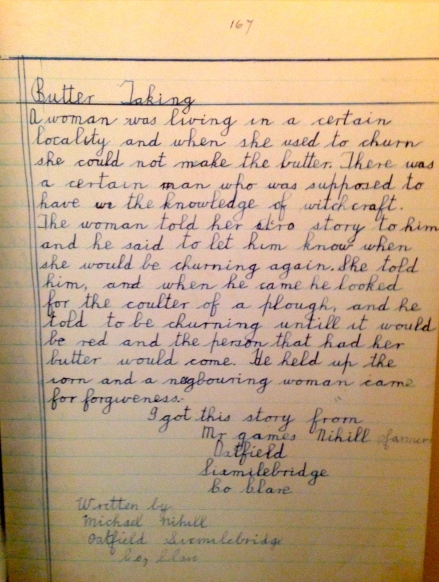
Museums of all sizes have their own strengths. Bigger museums, which tend to be richer, have the luxury of obtaining more delicate or important objects (loaned or owned) and fancier exhibitions via fresher interpretation and newer multimedia tools. This is because they have the money for higher insurance costs and travel expenses.
Smaller museums have the benefit of truly delving into a specific, and sometimes niche, topic. Often these museums are historical houses or local history museums. Although they can sometimes be outdated, small local history museums are always worth visiting, as you just might find a hidden gem.
I recently visited one of these gems, the Butter Museum in Cork. It is a museum that is proud of its local heritage. While a museum dedicated to the making, packaging, and history of butter may seem silly to some, butter has been historically important to both the city of Cork and Ireland as a whole.
The museum is housed in the Cork Butter Market building, which dates back to the mid-19th century. The ground floor mostly covers the physical production of butter, from the dairy cows to churning and wrapping. The display is filled with butter-making equipment, however there are only so many wooden contraptions one can inspect before the eyes start glazing over. Churns, firkins, and butter stamps fill the small exhibition space, and on the walls hang objects showing the societal obsession with good butter-making. One side has brands’ parchment wrappers on display. A digitized version can be found here on the museum’s website. Another wall highlights the superstitions and charms people would perform to ensure good butter production, such as sprinkling holy water on the cows, the prohibition of loaning churns, and using an executed dead man’s hand to stir the milk.

Upstairs covers the history of the butter trade in Cork and the ancient Irish traditions surrounding butter and cows. Cows were the status of wealth in early medieval Ireland, and the reputations of kings and warriors depended on their successes raiding enemy armies’ cowherds. On display in one room is a 1000-year-old keg filled with the remnants of bog butter. These caches were found buried in peat bogs, most likely placed there for preservation during the winter months, when the cows usually lacked milk. Some historians, however, argue that they were offerings to Celtic gods.

I found the success of the Cork Butter Exchange in the 18th and 19th centuries to be most interesting. The influence and eventual decline of this market actually spurred various changes in and out of Ireland. For example, Cork became the largest international butter market in the late 1700s due to the city’s stringent quality control of butter. Dairy farmers therefore traveled far to get their butter weighed and sold in Cork, risking bad weather, highwaymen, and difficult roads to get there. In the 1820s, the government decided to build direct roads from the three neighboring counties into Cork. A two-day trip from Killarney then became only seven hours.

The Cork Butter Exchange’s popularity declined in the late 19th century when refrigeration allowed people to enjoy fresher butter, which meant no longer needing or wanting the heavily-salted Irish butter. Cooperative creameries emerged to meet the demands of the modern market with the new technologies, with farmers encouraged to sell their milk through them. One cooperative founded by the government, the Irish Dairy Board (now Ornua), was created solely for overseas marketing. In 1961, the entire Irish butter export totaled around $7 million. The Irish Dairy Board opted to centralize Ireland’s dairy exports into one product for better brand recognition. Kerrygold was then created, a name synonymous with Irish butter. By the end of the 1960s, butter exports totaled about $100 million. By the 1980s, it had reached $1 billion.

Permanent exhibitions tend to be stuck in their ways, and are less likely to be changed to suit the modern museum visitor. This is especially the case for smaller, poorer museums, many of which host only one permanent display. Therefore, you can expect the Cork Butter Museum to be less interactive and more pedagogic in its interpretation. Saying that, I did not visit on a churning demonstration day, where visitors are invited to try their hand at making butter. The museum incorporates some great pieces of social commentary like poetry, but it is not enough to move communication into a dialogue.
The displays are slightly outdated, but delivered with passion. Is this the best museum you will ever visit? Probably no. However, it is an engaging exhibition and showcases a side of Ireland you might have never known about.
